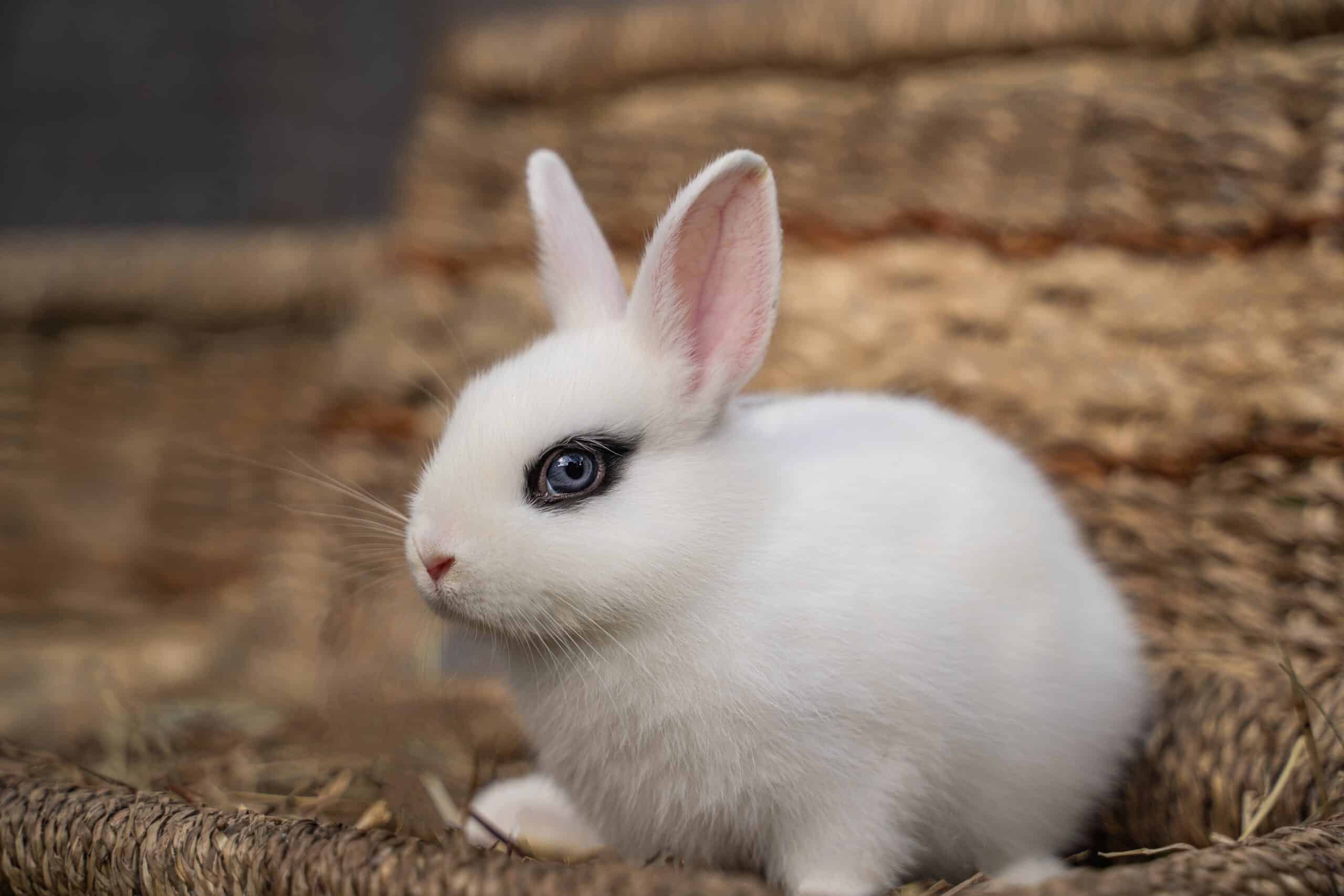Prehistoric cave paintings offer a captivating glimpse into the lives and minds of our ancient ancestors. Found in caves around the world, these artworks reveal the artistic skills and cultural practices of early humans. From detailed animal depictions to symbolic handprints, each painting tells a unique story. These masterpieces, created thousands of years ago, continue to fascinate and inform us about the history and evolution of human creativity.
Lascaux Cave, France

The Lascaux Cave, discovered in 1940, features over 600 paintings of animals such as horses, deer, and bulls. These vivid images, created around 17,000 years ago, are renowned for their detailed representation and dynamic compositions. The Great Hall of the Bulls is particularly famous for its impressive depictions of aurochs. The artists used natural pigments and a variety of techniques, including engraving and painting, to achieve remarkable effects. This site provides a fascinating glimpse into the lives and beliefs of our prehistoric ancestors.
Altamira Cave, Spain
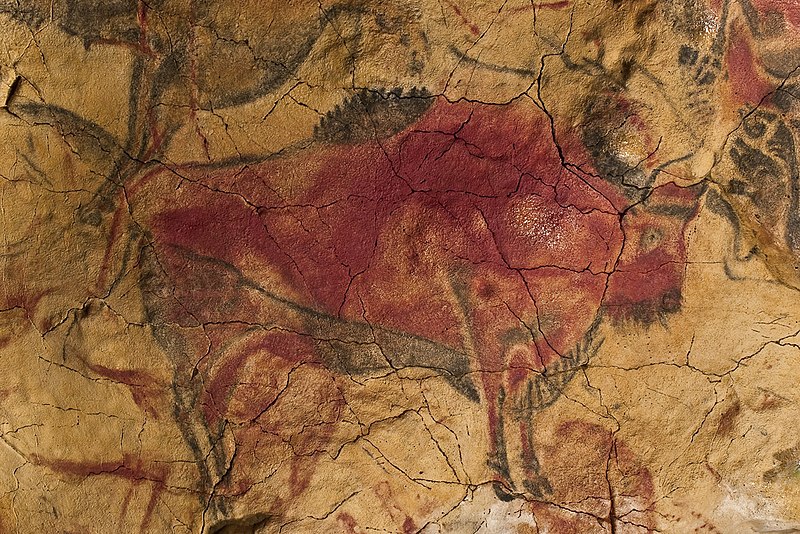
Located in northern Spain, Altamira Cave is celebrated for its stunning polychrome rock paintings, especially the bison. These artworks, dating back to around 36,000 years ago, showcase a mastery of perspective and color. The ceiling of the cave is adorned with bison in various poses, creating a sense of movement and vitality. The use of red and black pigments highlights the natural contours of the rock, enhancing the three-dimensional effect. Altamira’s discovery in the late 19th century revolutionized our understanding of prehistoric art.
Cueva de las Manos, Argentina
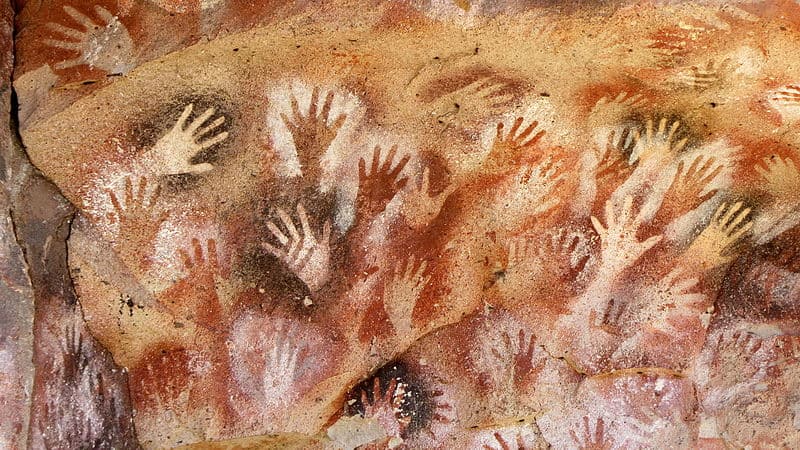
The Cave of the Hands, situated in Patagonia, Argentina, is famous for its stenciled handprints, which date back about 9,000 years. The vibrant red, white, black, and yellow handprints cover the cave walls, creating a striking visual effect. These prints are thought to have been made by spraying pigment over hands placed against the rock. In addition to handprints, there are hunting scenes and animal figures, indicating the daily life and rituals of the inhabitants. This site is a testament to the communal and symbolic practices of early human societies.
Bhimbetka Rock Shelters, India
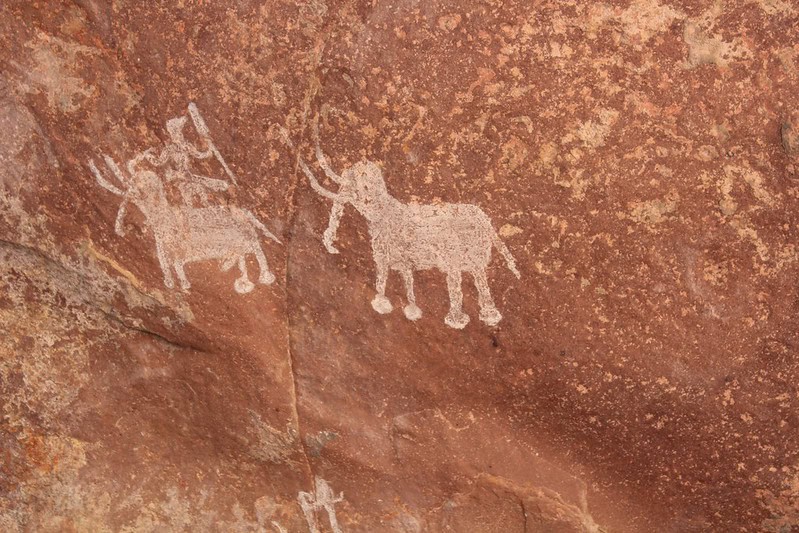
The Bhimbetka Rock Shelters in central India contain paintings that span over 30,000 years, showcasing the evolution of human art. These artworks depict various scenes, including hunting, dancing, and communal gatherings, reflecting the social life of the inhabitants. The use of ochre and white pigments creates vibrant and dynamic images. The paintings also include animal figures, such as tigers and deer, rendered with considerable detail. Bhimbetka’s extensive and diverse art provides a comprehensive view of prehistoric culture in India.
Magura Cave, Bulgaria
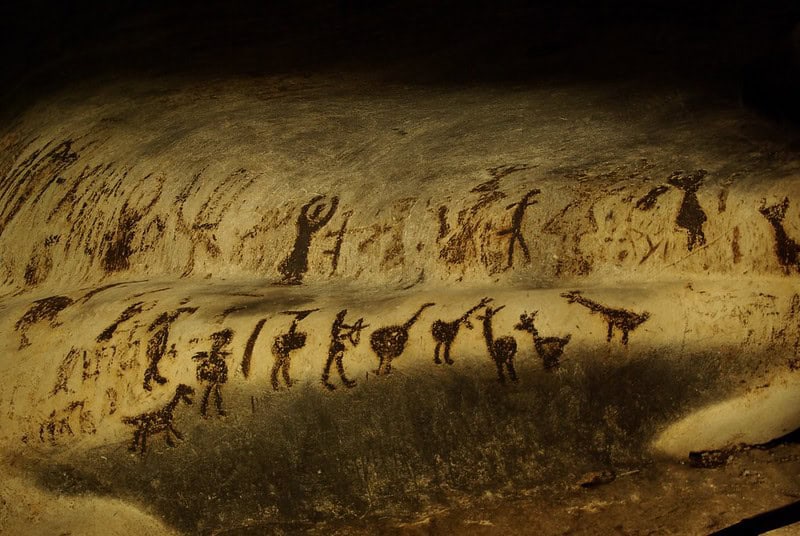
Magura Cave, located in northwestern Bulgaria, features paintings estimated to be between 8,000 and 10,000 years old. The cave’s walls are adorned with human figures, animals, and symbolic shapes, painted with bat guano. These images depict scenes of hunting, dancing, and rituals, offering insights into the spiritual and daily lives of the prehistoric people. The unique use of natural materials for pigments adds to the site’s intrigue. Magura Cave stands out for its blend of artistic expression and symbolic meaning.
Tassili n’Ajjer, Algeria
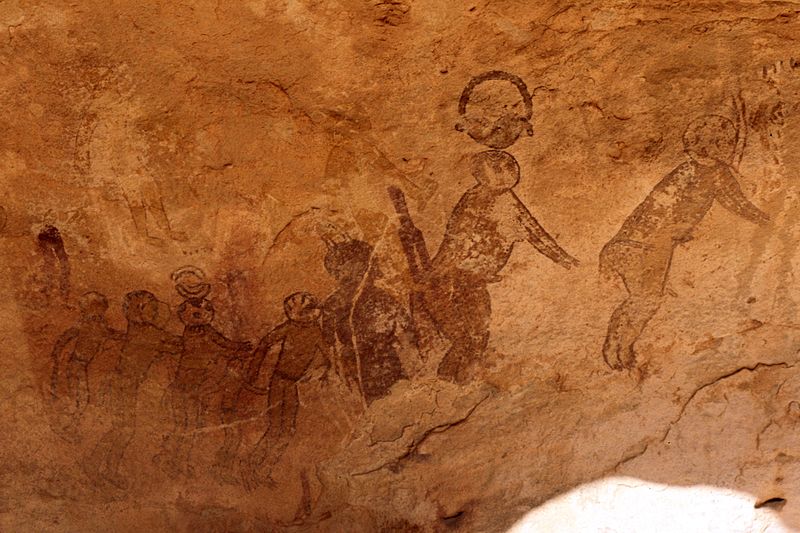
Tassili n’Ajjer, a vast plateau in the Algerian Sahara, is home to thousands of prehistoric rock paintings. These artworks, dating back to 12,000 years ago, depict a rich variety of scenes, including animals, human figures, and symbolic motifs. The paintings provide evidence of a once-lush landscape, inhabited by diverse wildlife. The vibrant colors and intricate details highlight the artistic skills of the prehistoric inhabitants. Tassili n’Ajjer’s extensive rock art is a crucial record of early human adaptation and expression in a changing environment.
Laas Geel, Somalia
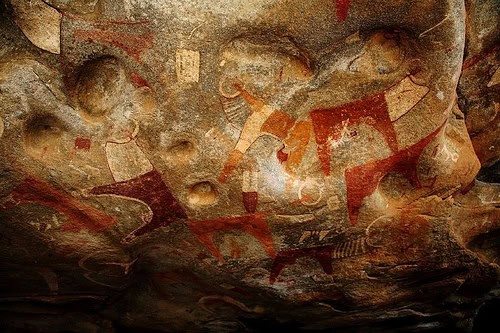
The rock shelters of Laas Geel in Somaliland contain some of the most well-preserved rock paintings in Africa, estimated to be around 5,000 years old. The vibrant paintings depict cattle in ceremonial robes, accompanied by human figures and domesticated animals. The use of bright red, yellow, and white pigments creates striking and detailed images. These paintings provide valuable insights into the pastoral culture and religious practices of the region’s ancient inhabitants. Laas Geel’s vivid artwork highlights the significance of cattle in early African societies.
Serra da Capivara, Brazil
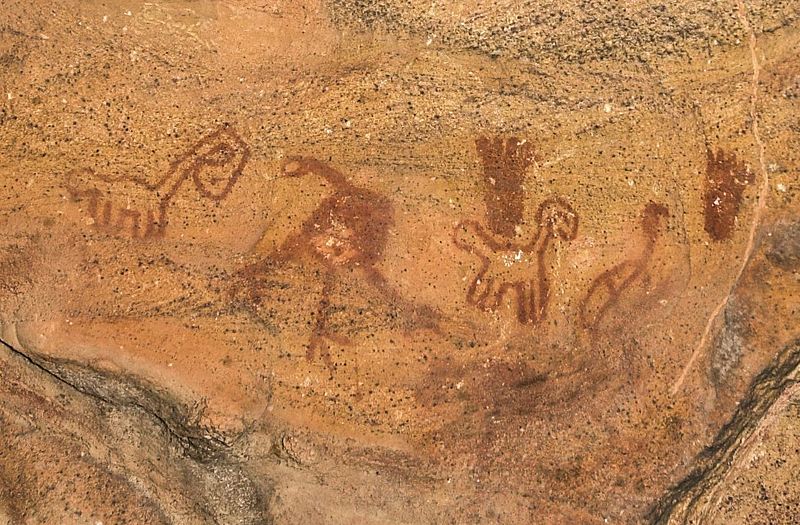
Serra da Capivara National Park in Brazil is renowned for its extensive collection of prehistoric rock art, dating back over 25,000 years. The paintings depict a wide range of scenes, including hunting, dancing, and rituals, rendered with dynamic and expressive figures. The use of red and yellow pigments creates a vibrant contrast against the rock surface. These artworks offer a glimpse into the social and spiritual lives of the prehistoric inhabitants. Serra da Capivara’s rich rock art contributes significantly to our understanding of early human culture in the Americas.
Niaux Cave, France
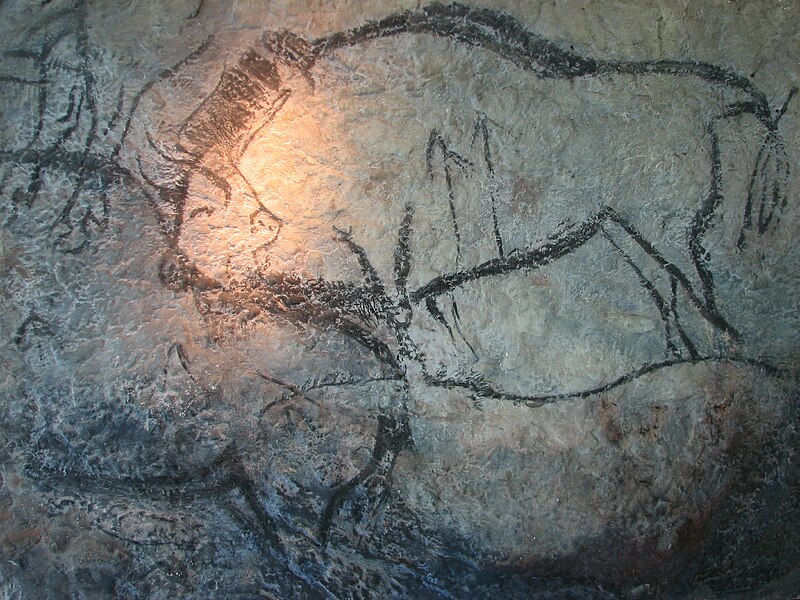
Located in the French Pyrenees, Niaux Cave is famous for its stunning black drawings of animals, created around 13,000 years ago. The paintings, predominantly of bison, horses, and ibex, are rendered with remarkable precision and detail. The use of black manganese dioxide gives the images a striking contrast against the cave walls. The Salon Noir, a large chamber in the cave, features some of the most impressive compositions. Niaux Cave offers a captivating glimpse into the artistic prowess of prehistoric people.
El Castillo Cave, Spain
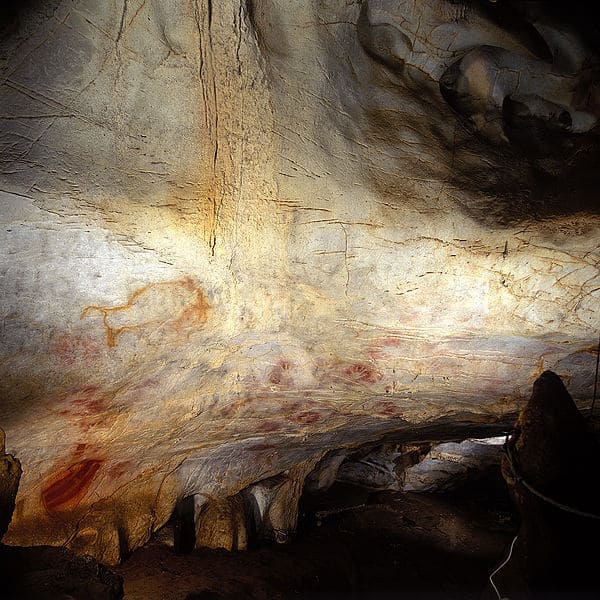
El Castillo Cave in northern Spain houses some of the oldest known cave paintings in Europe, with red disks and hand stencils dating back over 40,000 years. These simple yet powerful images are created using red ochre and other natural pigments. The hand stencils, made by blowing pigment around a hand pressed against the rock, evoke a strong sense of human presence. The cave also contains numerous animal figures and abstract symbols. El Castillo’s ancient art provides a direct connection to our distant ancestors.
Kimberley Rock Art, Australia
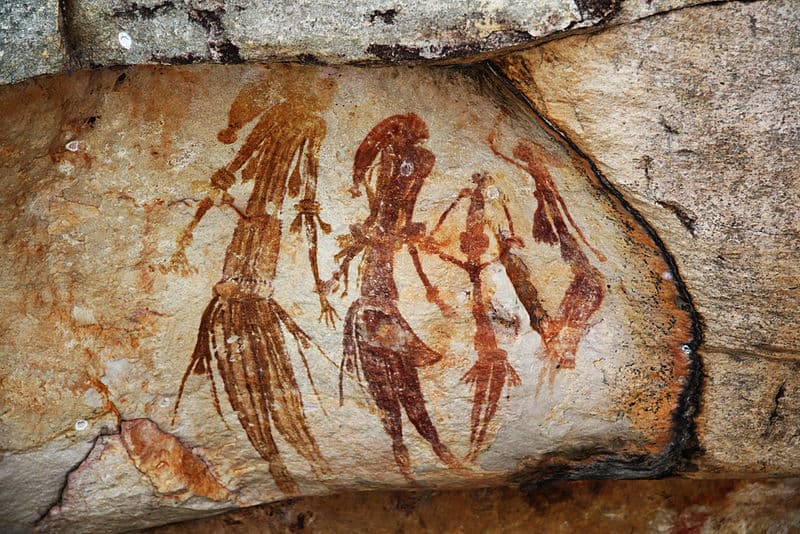
The Kimberley region in Western Australia is home to an extensive collection of rock art, including the famous Wandjina and Gwion Gwion figures. These paintings, estimated to be up to 17,000 years old, depict ancestral spirits, human figures, and animals in intricate detail. The use of natural pigments, such as ochre, creates vibrant and enduring images. The Wandjina figures, with their large, round eyes and elaborate headdresses, are particularly striking. Kimberley rock art is a vital part of Australia’s cultural heritage, reflecting the spiritual beliefs and artistic traditions of its indigenous peoples.
Sulawesi Cave Art, Indonesia
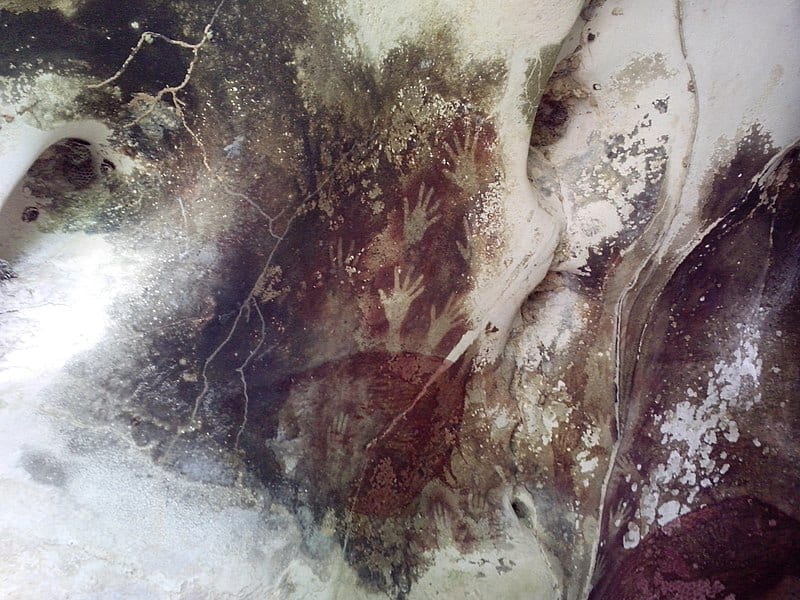
The limestone caves of Sulawesi, Indonesia, contain some of the world’s oldest known figurative art, with paintings dating back over 45,000 years. These artworks include depictions of animals, such as warty pigs and anoas, rendered with surprising detail and accuracy. The use of red and mulberry pigments creates vivid and dynamic images. One of the most famous paintings is a hunting scene featuring human-animal hybrids. Sulawesi’s cave art challenges previous assumptions about the origins of figurative art and highlights the early artistic capabilities of humans in Southeast Asia.
Pech Merle Cave, France
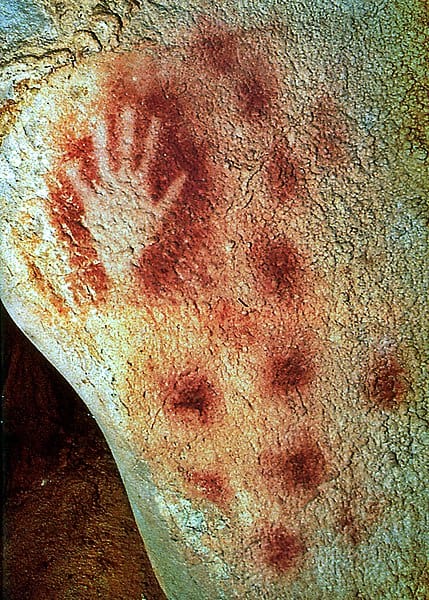
Pech Merle Cave in southern France is renowned for its striking paintings of spotted horses, mammoths, and human figures, dating back around 25,000 years. The artists used a technique of blowing pigment through hollow bones to create detailed and textured images. The spotted horses, with their distinctive markings, are among the most iconic prehistoric artworks. The cave also contains hand stencils and abstract symbols, adding to its rich artistic heritage. Pech Merle’s paintings provide a vivid snapshot of prehistoric life and creativity.
Tadrart Acacus, Libya
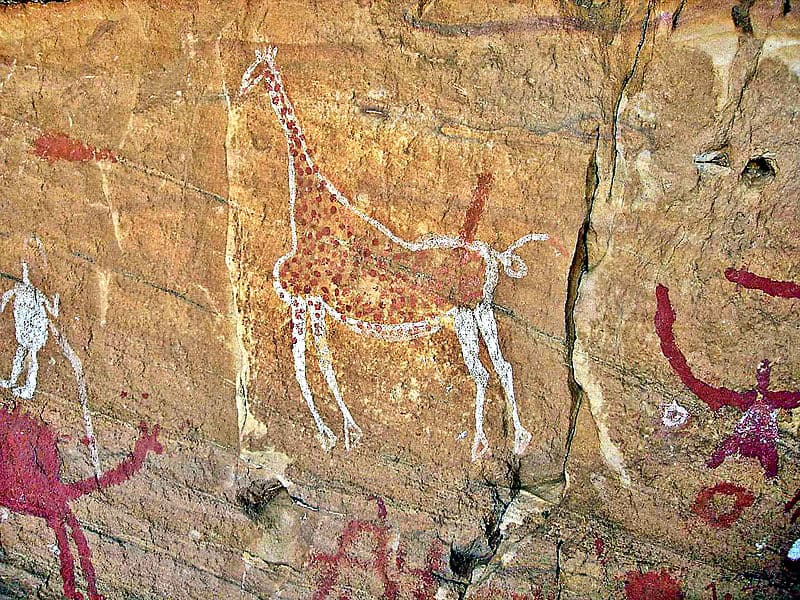
The Tadrart Acacus mountains in Libya are home to an extensive collection of rock paintings, dating back to around 12,000 years ago. The artwork includes depictions of animals, human figures, and geometric shapes, painted with red and yellow ochre. These images provide valuable insights into the region’s prehistoric environment and the lifestyles of its inhabitants. The paintings also reflect the changing climate and the transition from a wetter to a more arid landscape. Tadrart Acacus’s rock art is a crucial record of human adaptation and artistic expression in the Sahara.
Kakadu National Park, Australia
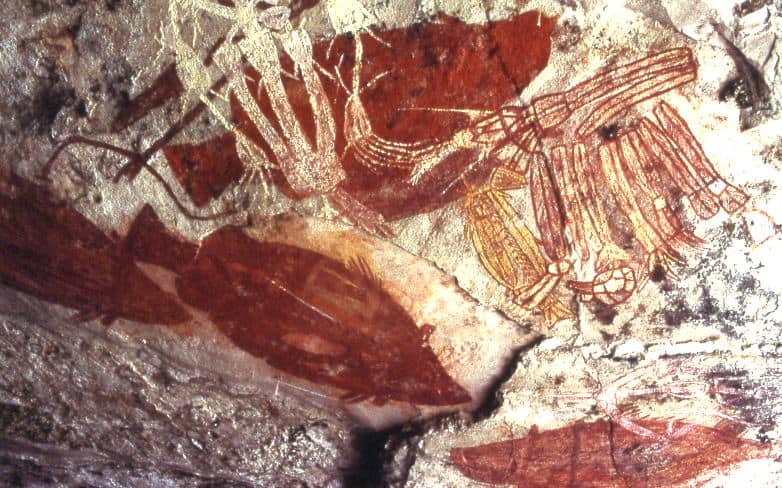
Kakadu National Park in Australia’s Northern Territory boasts one of the richest collections of Aboriginal rock art, with paintings dating back over 20,000 years. The artworks depict a wide range of subjects, including animals, ancestral spirits, and human activities. The use of vibrant ochre pigments creates striking and enduring images. The paintings also provide insights into the spiritual beliefs and cultural practices of the Aboriginal people. Kakadu’s rock art is a testament to the deep connection between the land and its indigenous inhabitants.
Cave of the Trois-Frères, France
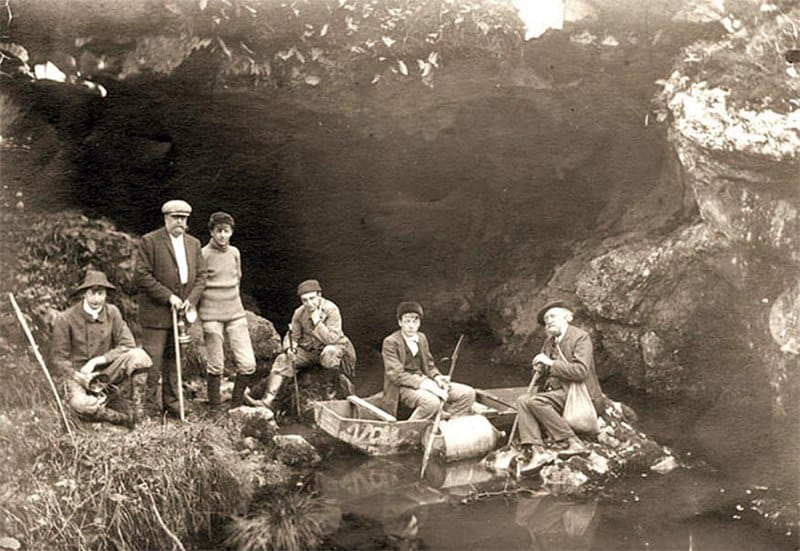
The Cave of the Trois-Frères, located in southwestern France, is famous for its intricate and enigmatic cave paintings, created around 17,000 years ago. The cave features numerous animal figures, including lions, bears, and bison, as well as hybrid human-animal figures. One of the most notable images is the “Sorcerer,” a part-human, part-animal figure that may represent a shamanistic belief. The use of engraving and painting techniques demonstrates advanced artistic skills. The cave’s artworks provide a fascinating glimpse into the spiritual and cultural life of prehistoric people.
This article originally appeared on Rarest.org.
More From Rarest.Org
Rabbits come in many breeds, each with unique characteristics and histories. Some breeds are particularly rare and fascinating, with distinct appearances and backgrounds that set them apart. Read more.
America’s wealthiest suburbs offer unparalleled luxury and convenience. These neighborhoods attract affluent residents with their exclusive amenities and scenic beauty. Read more.
Formula 1 is home to some of the most valuable and storied teams in motorsport history. These teams have built their reputations through a combination of engineering excellence, strategic partnerships, and competitive success on the track. Each team’s value reflects not only their performance but also their brand appeal, fanbase, and commercial prowess. Read more.

